
|
|
|
As reported by Wind Power Monthly, the Horizonte project in Chile's Atacama Desert would consist of 140 wind turbines with a total potential capacity of up to 980MW and is expected to generate around 2,000GWh of electricity annually. The project would be built on government land that has been set aside for renewable energy projects. Chilean energy company Colbun has applied for an environmental license to build the project.
Colombia and Chile recently announced electric vehicle programs. The following updates are from NRDC's Latin America Green News.*
* Latin America Green News is a selection of weekly news highlights about environmental and energy issues in Latin America. It is prepared by the Natural Resources Defense Council's (NRDC) Latin America Project. For a free email subscription, please sign up here. By Megan Darby, Climate Home News. The next UN climate summit will take place December 2-13, 2019 in Santiago, Chile, officials announced in March. COP25, as it is known, was originally scheduled for November in Brazil, but the plan changed after Jair Bolsonaro’s incoming administration withdrew the offer to host. Environment minister Carolina Schmidt led a successful bid for Chile to take over the presidency. She will be the first woman to oversee the negotiations in eight years. While there was no immediate comment from her office, Schmidt has publicised some of her early preparations for the role. She met last year’s Cop president Michal Kurtyka, of Poland, earlier in the week and on Wednesday tweeted: “We must move towards effective climatic action.” There had been talk of deferring the conference until January 2020, to give the country more time to raise funds and prepare. However the UN Climate Change Bureau ultimately agreed to squeeze it into 2019. The precise venue is to be confirmed. It is not the only high-profile event in Santiago’s calendar: leaders of Asia-Pacific Economic Cooperation countries are due to convene November 16-17, 2019. “The Piñera admin is making a bold statement in favor of multilateralism,” tweeted Latin America climate expert Guy Edwards. A ‘pre-COP’ ministerial meeting is expected to take place in Costa Rica, possibly as soon as October, according to sources. This article originally appeared on Climate Home News. Image: United Nations Climate Action Summit 2019
Climatescope 2018 is a report by Bloomberg New Energy Finance (BNEF) that compiles and analyzes data on clean energy deployment, investment, and government policies in 103 developing nations. According to the report, developing nations are now leading the global clean power transition. Key findings include the following:
Climatescope's free searchable database with profiles of all 103 countries can be accessed here. Figure 1: Developing Country Clean Energy Investment Source: Bloomberg New Energy Finance. Includes 100 non-OECD nations plus Chile, Mexico, and Turkey.
Google announced on September 12, 2018, that it plans to expand its Latin American data center near Santiago, Chile. Since 2017, the center has operated entirely on solar power from Chile’s Atacama region. The center is linked to California through a subsea cable. Google will invest an additional $140 million to expand the facility.
Google executives told Reuters that they had chosen Chile "because of its favorable climate for foreign direct investment, a clear regulatory framework and a good supply of renewable energy resources." The International Energy Agency's 2018 review of Chile's energy policies found that the country "has emerged as a world-class destination for solar and wind energy developers." The percentage of electricity generated from renewables has tripled in the past five years, increasing to 18% of Chile's electricity mix (excluding large hydro). Chile's favorable policies, renewable energy resource potential, and innovations in renewable energy auction design have been key factors in attracting investment. By Blanca Lopez Bassa. Chile will award between 7.200 GWh to 7.900 GWh of energy power supply contracts in an energy auction to be held by the end of 2018, according to a presentation by the Chilean Energy National Commission (CNE). On March 14, 2018, the CNE opened the registration process for institutions and users interested in presenting technical observations on the 2018 energy auction’s preliminary reports. This process officially launches the 2018 energy auction, according to article 131 ter of Law 20.805. Since the reforms introduced by Law 20.805 of 2015 and Transmission Law 20.936 of 2016, Chilean energy policy has been characterized by unsubsidized and technology neutral energy power supply auctions. The Chilean model has demonstrated that it is possible to attract new renewable energy generators to the market by removing barriers for clean power generators and incentivizing investments in generation. During prior energy auctions in 2016 and 2017, Chile succeeded in its policy objectives of stimulating competition, decreasing energy prices (Figure 1), and incentivizing entry of new renewable energy generation actors. For example, Auction 2015/01 of 2016 registered the lowest renewable energy price up to that date, US$29.2 MWh (almost half the carbon price in the same auction). The energy supply will come from “new wind capacity (45.5%), new solar capacity (6.8%) and a mix of conventional capacity (47.6%)” (IEA, at 95). In the energy auction of 2017, the majority of new entry participants were renewable energy generators, the lowest energy price registered was US $21.48 / MWh, and the average price awarded was US $ 32.5 / MWh, as reported by Emol.economia. Chile’s innovations in energy auction design include the use of hourly and quarterly sub-blocks, which are particularly beneficial for renewable energy generators. In addition, the government established longer contracts and more flexibility, among other regulatory and policy incentives, to attract investment. For example, the government allows up to five years “to postpone the term of beginning of the energy supply or put an early termination to the contract if, for reasons not attributable to the successful bidder, its generation project it is delayed or if it becomes unviable,” according to article 135 ter of Law 20.805. Blanca Lopez Bassa is a Research Fellow at the InterAmerican Clean Energy Institute.
 Michelle Bachelet, President of the Republic of Chile; Isabel Allende, President of the Chilean Senate, and Máximo Pacheco, Minister of Energy attended the ceremonial installation of the first solar panel for the 141 Megawatt (MW) Luz del Norte Solar Power Plant on October 17, 2014. The project, which will use 1.7 million of Arizona-based First Solar’s photovoltaic thin film modules, is expected to be complete by December 2015, and will become the largest solar plant in Latin America. In June, the U.S. Overseas Private Investment Corp. (OPIC) approved a loan guarantee of $230 million to support construction. The International Finance Corporation (IFC), a member of the World Bank Group, also provided financing. A key component of the project is local workforce training. “Projects, such as this show that Chile is progressing towards being a clean energy producing country. This year alone, we are incorporating more than 1000 MW of new energy to our system through different non-conventional renewable energies. This is an important step towards our 2025 target of having 20 percent of our energy coming from non-conventional renewable energies,” said Bachelet, speaking to a group gathered at the construction site. “Chile is in a position to be a leader in renewable energy in the Southern Cone, and in the Atacama region we are doing so. We must continue to assume leadership, and we must work as a team to assure the effort goes forward to attract more business and leverage greater economic growth.”  The Overseas Private Investment Corp. (OPIC) approved a loan guarantee of up to $230 million to support construction of Luz del Norte, a 141-megawatt solar plant in Chile, which is being built by Arizona-based First Solar. Since 2013, OPIC has approved $900 million in loan guarantees for six renewable energy projects in Chile, making the U.S. the largest lender for renewable energy in the country, according to The Hill. Chile: Renewables Boom Continues with $320M Investment in 161 MW of New Solar and Wind Capacity12/3/2013
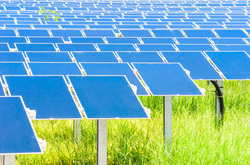 Enel Green Power, a unit of Italy’s biggest power utility, will build two solar plants and a wind farm in Chile with total capacity of 161 MW, according to Bloomberg. The projects will cost about $320 million and are expected to begin operations by the first half of 2015. Power will be sold at a rate of $128 a megawatt-hour, according to a statement from the company. Enel is currently constructing Chile’s largest solar farm in the northern Atacama desert. The “Diego de Almagro” plant will have a total installed capacity of 36 MW, according to Enel.  Enel Green Power, controlled by Italy's Enel, Europe's No. 2 utility, is shifting more of its investments away from Italy and Spain to emerging economies, according to Reuters. In Latin America, Enel's Spanish unit Endesa is seeking to develop 700 megawatts of renewable capacity in Brazil and 500 megawatts in Chile by 2017. |
Categories
All
Archives
January 2025
Blogroll
|
|
© 2013 - 2025 InterAmerican Clean Energy Institute, a project of Earth Ways Foundation Inc, a 501(c)3 nonprofit organization.
|
Web Hosting by iPage
|
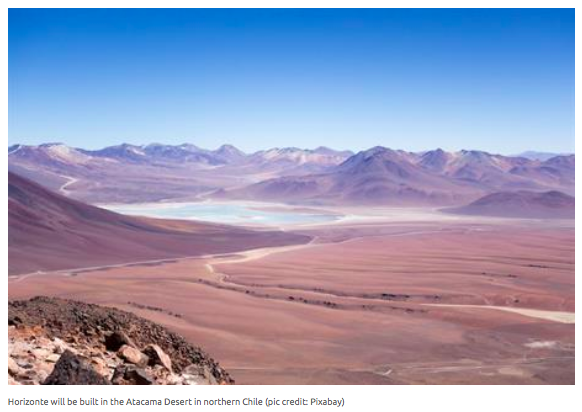
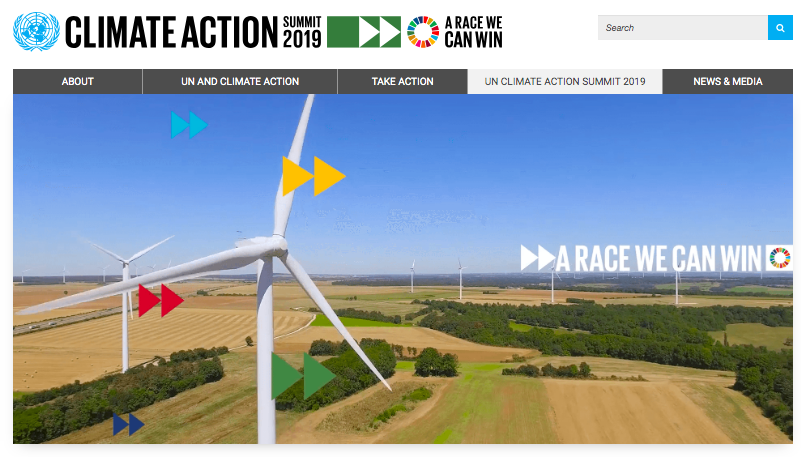
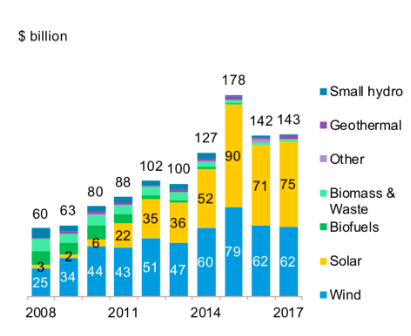

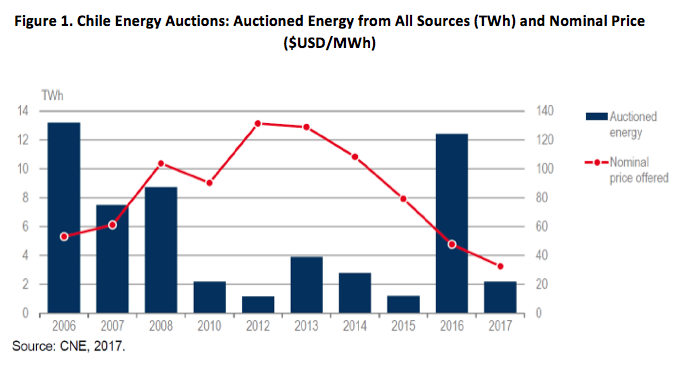
 RSS Feed
RSS Feed